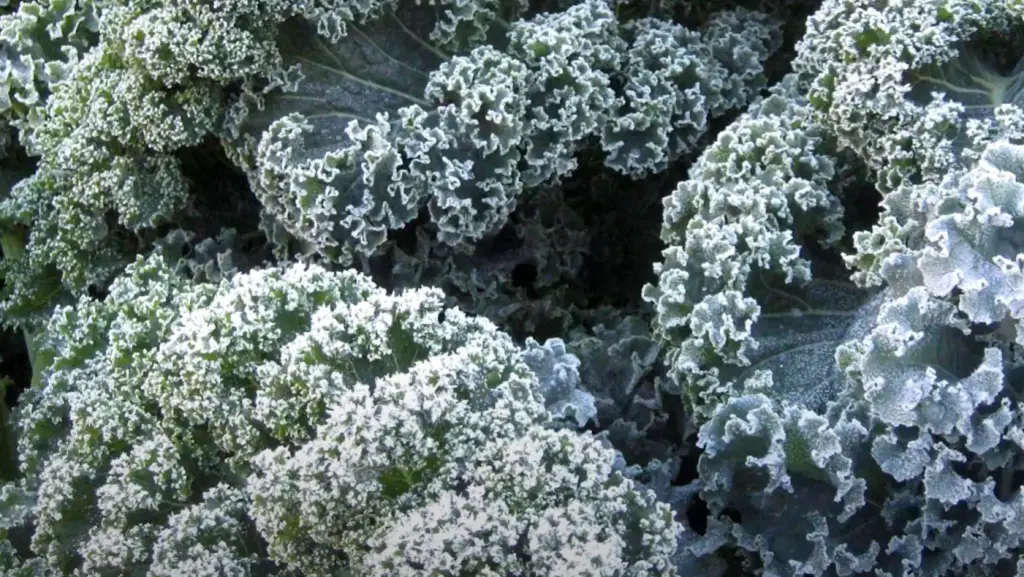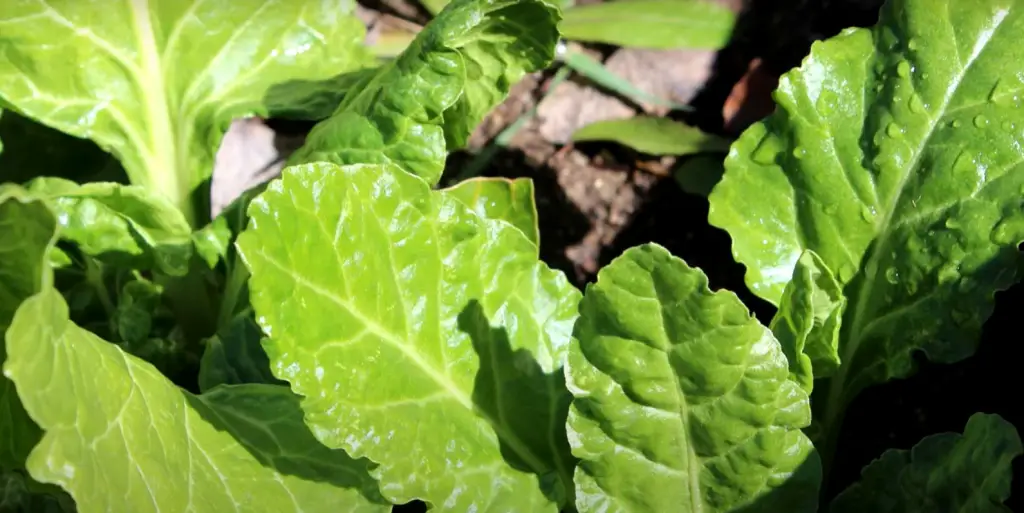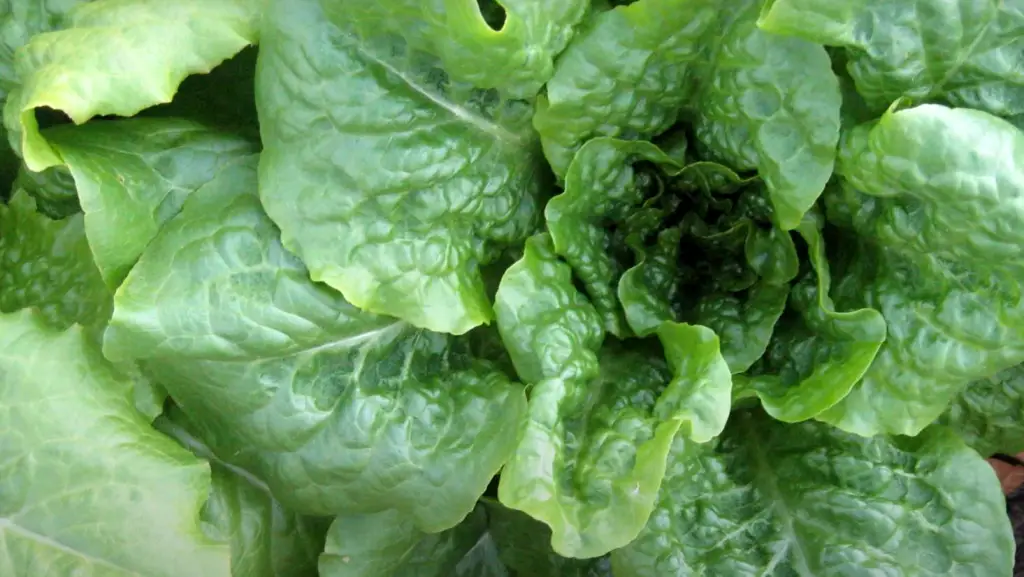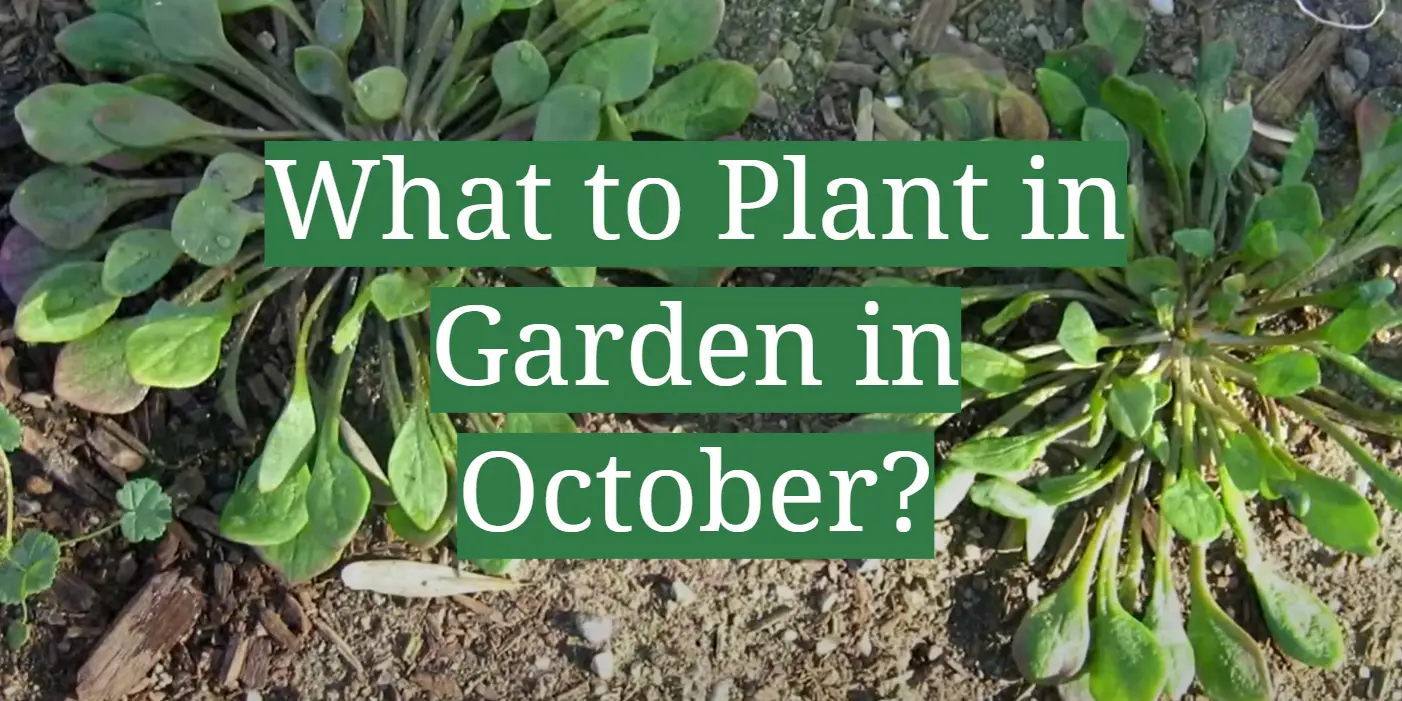As the leaves change color and fall to the ground, it’s time to start thinking about planting your garden for the winter. While some plants can be planted in October, there are others that will do better if you wait until later in the month or even into November.
In this guide, we will discuss what to plant in your garden in October so that you can have a bountiful harvest come spring.
What to Sow and Plant in October?
Garlic
If you want to plant garlic, October is the perfect time. You can find garlic cloves at your local grocery store or farmers market. Plant the cloves in well-drained soil that is in full sun.
Each clove should be planted about six inches apart. Water the garlic regularly and fertilize it every few weeks. You should see garlic scapes (the long, thin, flowering stalk) in early summer. Cut them off to encourage the plant to put all its energy into the bulbs. The garlic will be ready to harvest in late summer or early fall.
Onions
There are three ways to plant an onion: from seed, in sets or as transplanting. If you want to grow young onions, you can do so indoors before planting them in your garden.
You can sow onions directly into beds once all danger of frost has passed. But make sure you keep records, so that future sowings don’t go to waste!The onion seed has the longest germination time of all types, so you need a little more patience when planting these. If you want to plant some seeds indoors before transplanting them, do so about eight weeks before your planned date. Keep the plants moist until they’re four inches tall, and then thin out the plants so that each one is spaced at least six inches apart from another.
If you’re planting onion sets, wait until after the last frost to plant them. Choose a sunny location in the garden and dig up a small area to loosen the soil. Plant the sets about four inches apart and cover them with about an inch of soil. Water the area well after planting. [1]
Land cress
It’s not just a pretty face! Land cress is an excellent source of vitamins A and C, as well as calcium, iron, and potassium. This hardy little plant can withstand frost and even some snow, making it a great choice for gardens in colder climates. Plant land cress in full sun to partial shade in rich, well-drained soil.
The best way to do this is to snip the plants with scissors when they’re about four inches tall. You can also harvest land cress by cutting the entire plant down to the ground. This will encourage new growth and prevent the plant from getting too leggy.
Land cress is a versatile little plant that can be used in a number of ways. The young leaves have a mild, peppery flavor that makes them great for salads or as a garnish. You can also use land cress in soups, stews, or sandwiches. The leaves can be cooked like spinach, or you can use them raw in a pesto or salsa.
Chinese Leaves
This leafy green vegetable is also known as bok choy or pak choi. It’s a cool-weather crop that can be planted in early October in most parts of the country. Chinese leaves are fast-growing and will be ready to harvest in about six weeks.
To plant, sow seeds directly into the ground or start them indoors in pots. Chinese leaves can be grown in full sun or partial shade.
Be sure to water regularly and fertilize every few weeks for best results. When the plants are six inches tall, you can begin harvesting by cutting the leaves off at the base of the plant.
You can enjoy your chinese leaves raw in salads, or cooked in stir-fries or soups. [1]
Root Vegetables
The soil is still warm enough for them to germinate and grow before the colder weather sets in. You can also plant garlic this month. It will need about six weeks to mature before you can harvest it. Beets, carrots, turnips, and radishes are all great choices for October planting.

If you’re thinking about starting a garden next year, now is the time to start preparing. October is the perfect month to begin planning and gathering all the supplies you’ll need. You can also start seedlings indoors this month so they’ll be ready to plant when the weather is right.
Alliums
Alliums are a great choice for October planting. They include garlic, chives, and shallots. Alliums are known for their ability to deter pests and improve the health of your soil. They’re also a great addition to any meal.
Artichoke
The artichoke is a perennial vegetable that grows in temperate climates. The plant produces large, edible flowers that are often used in salads or cooked as a side dish. Artichokes can be planted in October and will produce flowers the following spring.
If you live in an area with cold winters, you will need to protect your artichokes from the frost by covering them with a layer of mulch. Artichokes are relatively easy to grow and care for, but they do require regular watering and fertilization.
Spring Cabbages
Cabbage is a cruciferous vegetable and one of the healthiest vegetables you can eat. Cruciferous vegetables are known for their cancer-preventing properties, so it’s a good idea to include them in your diet as much as possible. Cabbage is also a great source of fiber, vitamins C and K, and folate.
If you’re looking to add some cabbage to your garden, October is a great time to plant it. Spring cabbages are a type of cabbage that is harvested in the springtime, so planting them in October will give you a head start on the growing season. Spring cabbages are usually smaller than other types of cabbage, and they have a sweeter flavor.
To plant spring cabbages, you’ll need to start with seedlings or transplants. Seedlings are young plants that are started from seeds, while transplants are older plants that have been grown in a nursery and then transferred to your garden. Transplants are usually easier to care for and will produce a higher yield, so they’re the best option if you’re new to gardening.
To plant your spring cabbages, dig a hole in the ground that’s large enough to fit the root ball of the plant. Gently remove the plant from its pot, being careful not to damage the roots, and place it in the hole. Fill in the hole with soil, and water the plant well.
Broad Bean
If you want to add some greenery to your garden in October, then consider planting broad beans. These plants are relatively easy to grow and don’t require much maintenance. They also have a long growing season, so you’ll be able to enjoy them for many months.
Another benefit of broad beans is that they’re a great source of food for bees and other pollinators.
Winter Lettuce
Lettuce is a cool weather crop, so it’s perfect to plant in the fall. It’s also relatively easy to grow, so it’s a great choice for beginning gardeners. Look for winter varieties of lettuce, such as ‘Arctic King’ or ‘Winter Density’. These varieties are more tolerant of cold weather than other types of lettuce.

Plant lettuce seeds in September or October, about six weeks before the first frost date. Sow the seeds thinly in rows, and cover them with a thin layer of soil. Water the seed bed well. Lettuce seeds will germinate in about two weeks.
Thin the seedlings to about six inches apart when they are four inches tall. Lettuce plants need plenty of space to grow, so don’t be tempted to overcrowd them.
Water lettuce plants regularly, especially during dry weather. Lettuce is a shallow-rooted plant, so it doesn’t need a lot of water. However, it will bolt (go to seed) if the soil is too dry.
FAQ
What Plants are Best Planted in October?
It’s not too late to plant your garden for the season! This month is cool-season, which means that you can get started with some of our favorite veggies. Broccoli can withstand frost and grow well at lower temperatures.
Brussels sprouts are also hearty enough to be left outdoors all winter long without too much damage. Cabbage and cauliflower grow well in fall weather, so now is a good time to buy seed packets before they become harder to find.
As for other types of plants, mums are always a nice addition to any garden and they’ll last until early November (and sometimes longer). Asters are also lovely this time of year and will often rebloom if you cut them back after the first flowers have faded. And don’t forget the pumpkins! These tasty gourds can be planted in October and will usually be ready to harvest by Halloween.
Some flowers that can be planted in October are pansies, snapdragons, and violas. These flowers will add some color to your garden in the cooler months. Bulbs, such as daffodils and tulips, can also be planted in October. They will bloom in the spring.
What Should I Be Planting in October?
It’s hard to say what the best vegetables for your climate is, but some good choices include kale and broccoli. If you live in an area with hot weather though it might be better not plant tomatoes or eggplants because they need more sunlight than most other plants do!
You can’t go wrong with planting vegetables in October! From Pole Beans to Squash, there are so many delicious options for nourishing your garden this month. If you have a flower bed, consider adding flowers that bloom during colder months. These plants don’t need as much sunlight as other plants do, so they will still look beautiful even when it is not shining perfectly bright outside.
No matter what type of garden you have, or what climate you live in, one plant that is always a good choice for October planting is the pumpkin.
What Veg Can You Plant in October?
Planting your fall veggies is a great way to add some color and nutrients into the soil. You can plant cauliflower, Brussels sprouts ,cabbage kale radishes, beets, carrots, chard tomatoes, spinach lettuce in October for best results!
Can I Plant Anything in October?
Yes! There are plenty of things you can plant in October. In fact, this is a great time to plant many different kinds of vegetables, herbs, and flowers.
There are so many things you can do this time of year to enjoy the autumn season! Starting with plants, consider planting carrots or kale. Adding flavor to your cooking can be easy. You can use herbs like cilantro and parsley.
You can also try flowers like the cosmos. They will add color to your food and make it more beautiful. Just make sure that you do not use flowers that need a lot of water.
It’s always important to take into account the climate in your area when deciding what plants are best for planting. For example, if you live in a place that has cold winters, you can plant flowers or vegetables that need less sunlight.
What Flowers Do I Plant in October?
If you’re looking for a colorful addition to your fall garden, consider planting chrysanthemums. These flowers come in many colors and can brighten any space with their vibrant blooms. Another flower worth considering this October is the aster; it also has an array of gorgeous varieties that will bring life into any landscape!
What Shrubs Can I Plant in October?
There are a few shrubs that you can plant in October including:
- Azaleas
- Camellias
- Gardenias
- Hibiscus
- Lantana
- Oleanders
Just be sure to check the planting instructions on the tag or nursery pot. This will tell you if the plant is appropriate for your gardening zone and when you should plant it. October is also a good time to plant spring-flowering bulbs. Some examples of bulbs that can be planted in October are:
- Daffodils
- Grape hyacinths
- Tulips
Useful Video: What Can I Plant in October? Cold Hardy Vegetables.
Conclusion
With a little bit of effort, you can have a beautiful garden in October that will provide color and interest well into the fall season. By planting some of these plants now, you’ll be able to enjoy their beauty for weeks to come. What are you waiting for? Get out there and start planting!
References:
- https://sustainablefoodcenter.org/latest/gardening/what-to-plant-in-october










Leave a Reply
View Comments